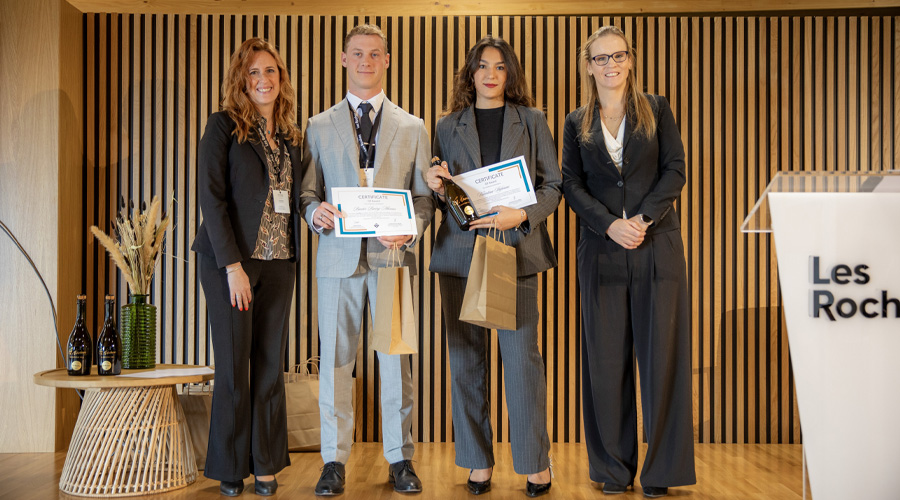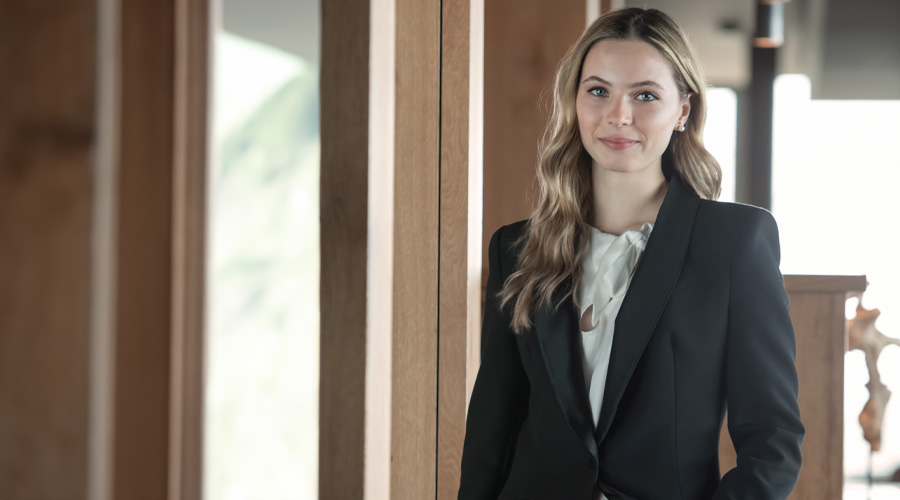One of the perks of volunteering as a Student Ambassador is getting to go on a special one-day trip at the end of the semester. This May, we headed to the Hublot factory in Nyon for an exclusive tour of this Swiss luxury watch brand.

Our Hublot visit began with an introduction to the brand’s history and DNA. Hublot aims to represent not just a watch, but a lifestyle, as our tour leader explained. At the heart of the brand’s identity is “the art of fusion,” a concept that references Hublot’s innovative use of unexpected materials.
Just after the reception area, we entered a long corridor featuring a timeline of Hublot’s history. Hublot was founded in 1980 by Italian watchmaker Carlo Crocco, who designed the world’s first luxury watch with a rubber strap. By pairing gold and rubber, Crocco had introduced the “fusion” which Hublot would become famous for. In 2004, Jean-Claude Biver became CEO and led the brand to great success with the launch of award-winning designs, such as the “Big Bang” (2005), and through sports partnerships with groups like Formula 1, FIFA and UEFA.
Manufacturing Magic
We then moved on to the factory floor, where polymechanics operated enormous machines to produce the smallest of watch components. We learned that the polymechanics are responsible for checking the quality of their own work, and that each machine produced one component. And just how many hand-assembled components go into one timepiece? Hublot’s 2005 “Big Bang” had more than 70 — and some of the brand’s most intricate models have nearly 700!

Hublot not only manufactures its own movements and other parts in-house, but also researches and creates its own unique materials. In the Magic Gold lab, we saw how Hublot produces this innovative material — an 18-karat gold alloy that is scratch-resistant. Magic Gold was developed as a durable alternative to pure gold, which is easily scratched. By fusing pure gold and boron carbide, an extremely hard ceramic, Hublot invented a new, durable type of gold with a unique color.

Innovative Design
Next, we visited the stone-setting room, where we got to see some real “bling” up close. We took turns to peek through a microscope, seeing firsthand the careful work involved with setting diamonds. Hublot does its stone setting in-house, so clients can order one-of-a-kind timepieces. We saw photos of some of these bespoke watches featuring glittering diamonds, emeralds and other precious stones.

After that, we saw real custom-made masterpieces in an area called the “complications” room. This is where some of Hublot’s most intricate creations are made, such as the Ferarri-inspired “Laferrari” (one of the models with nearly 700 parts).
Our tour finished with lunch — including cheese produced by Jean-Claude Biver — and a visit at the showroom. There, we could admire the impressive range of Hublot timepieces, and even try them on for ourselves. It was the perfect ending to a day of luxury.


Thanks, Hublot!
Click HERE to have a look at the full album of the visit



